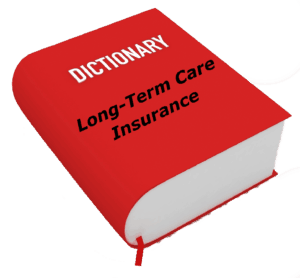There are two main types of long-term care insurance policies:
“Cash Policies” and “Reimbursement Policies”
A “Cash” long-term care insurance policy is a policy that pays the full Monthly Benefit for each month that you qualify for benefits,
- regardless how much your care actually costs, and
- regardless who provides you with personal care.
A “Reimbursement” long-term care insurance policy pays up to the Monthly Benefit each month, but no more than the actual expenses charged by the qualified care provider.
All things being equal, a “Cash” long-term care policy is better than a “Reimbursement” long-term care policy, because:
- it’s more flexible, and
- it can pay you more money (if your Monthly Benefit is higher than your actual cost of care).
However, when comparing policies with a similar “Monthly Benefit”, “Inflation Benefit”, and “Maximum Lifetime Beneit”, “Cash” long-term care policies are usually more expensive than “Reimbursement” policies. In many cases “Cash” long-term care policies can cost twice as much as similar “Reimbursement” policies.
Therefore, some long-term care insurers have developed “Reimbursement” policies that have some “cash benefits” but are more affordable than “Cash policies”. There are three different types of these “Reimbursement plus Cash” policies:
- A policy that pays the full Daily Benefit regardless of the actual cost of care. This type of policy is slightly different than a “cash policy” in that it only pays the full Daily Benefit for each day that you receive care from a qualified care provider. It pays the full Daily Benefit regardless of how much the qualified care provider charges. You can do whatever you wish with any money that is in excess of the care provider’s charges.
- A policy that reimburses for your actual cost of care up to your Monthlly Benefit, PLUS it pays some benefits in cash each month which you can use as you wish. Some of these policies pay 15% of the benefits in cash and others may pay as much as 50% of the benefits in cash (in addition to the full reimbursement benefits).
- A policy that allows you to alternate between “cash benefits” or “reimbursement benefits” as your care needs change–the “cash benefits” are usually 50% or less of the “reimbursement benefits”.
This can be one of the more confusing aspects of long-term care insurance. I am sure that my readers will have LOTS OF QUESTIONS. Please post your questions below and I’ll be happy to respond.
Thanks in advance!


